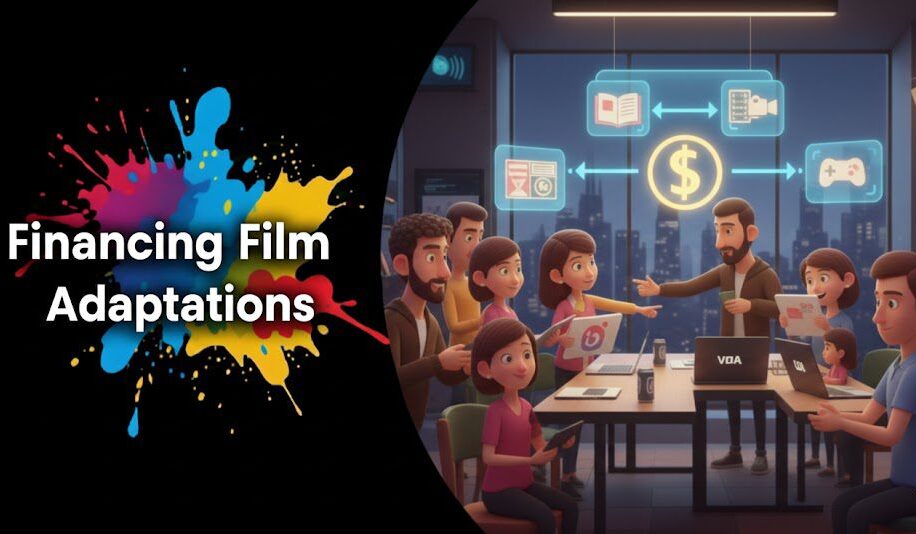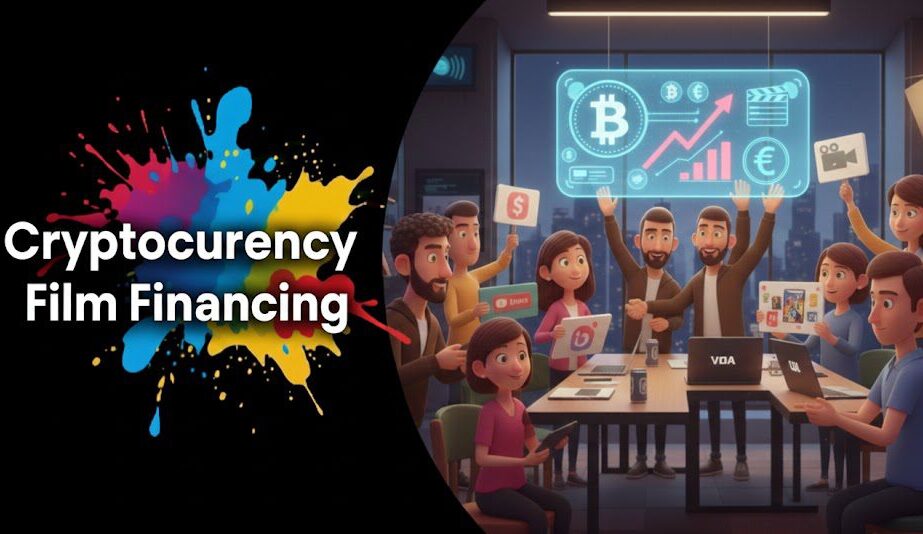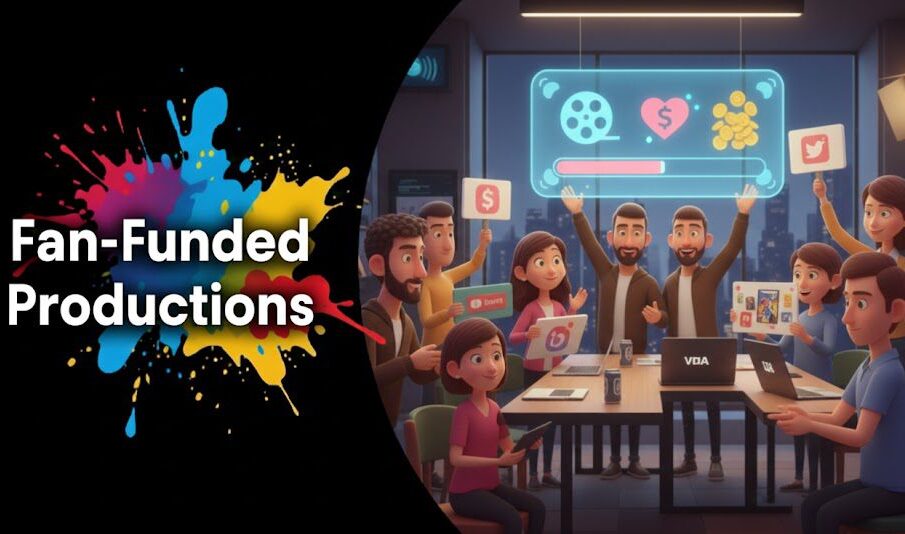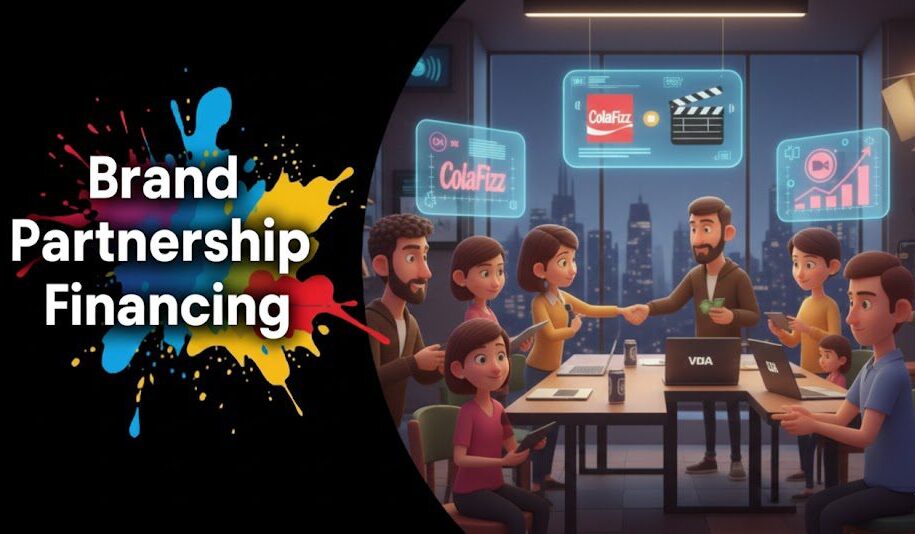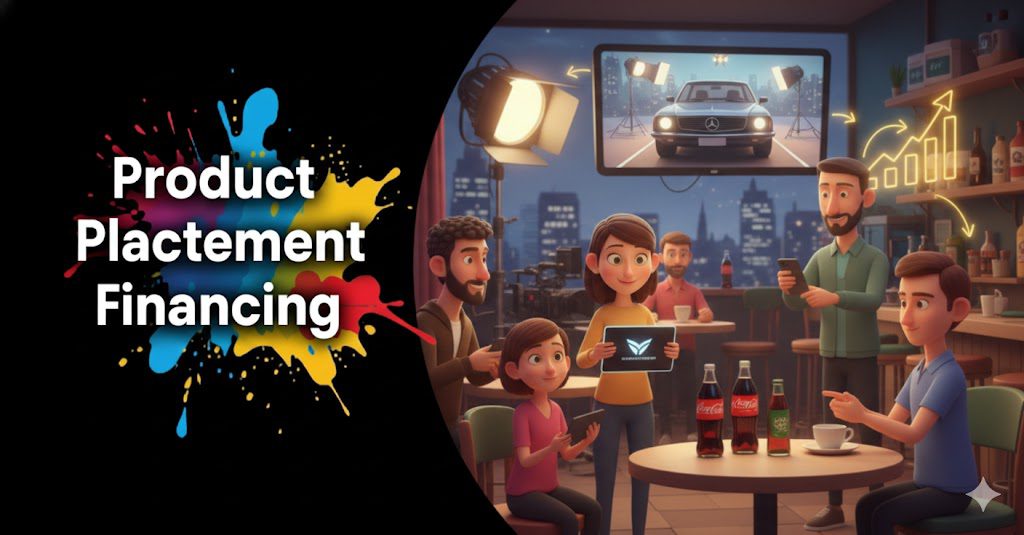Introduction
Dive into any content deal, and at its heart, you’ll find the content licensing agreement. This crucial document is more than just paperwork; it’s the legally binding blueprint that dictates how a film, TV show, or other media asset can be used, by whom, where, for how long, and for how much. For legal teams, business affairs executives, content acquirers, and rights holders, understanding the intricacies of a content licensing agreement is paramount.
From essential clauses like grant of rights and payment terms to complex issues surrounding intellectual property and termination, this guide will help you decode these often complex contracts. We’ll also touch on effective negotiation tactics to help you secure favorable terms. Let’s unravel the legalese and strategic considerations behind every robust media licensing contract.
Table of content
- Introduction
- Key-Takeaways
- Understanding the Content Licensing Agreement: Its Role and Importance
- Dissecting the Document: Essential Clauses in Every Media Licensing Contract
- Intellectual Property Rights: The Core of Your Agreement
- Strategies for Negotiating Content Deals: Tactics for Buyers and Sellers
- Common Pitfalls to Avoid in Content Licensing Agreements
- Understanding Master License Agreements and Their Scope
- How Platforms Like Vitrina AI Impact Agreement Considerations
- Conclusion
- FAQs
Key Takeaways
| Agreement Aspect | Core Insight | |
|---|---|---|
| Purpose of Agreement | A content licensing agreement legally defines the permissions granted by a licensor to a licensee for content use. | |
| Essential Clauses | Includes Grant of Rights, Territory, Term, License Fee, Exclusivity, Warranties, and Indemnities. | |
| Intellectual Property | Clearly defines ownership and protects the copyright of the content throughout the licensing term. Chain of title is key. | |
| Negotiation Points | Scope of rights, financial terms, exclusivity, delivery terms, and termination conditions are common negotiation areas. | |
| Importance of Clarity | Ambiguity in a film rights agreement or TV show license terms can lead to disputes and financial loss. Precision is vital. | |
| Legal Counsel | Expert legal advice is indispensable for drafting, reviewing, and negotiating these complex agreements. | |
| Further Learning | For a broader context, refer to our Definitive Guide to Content Licensing. | |
Need to Master Media Licensing Contracts?

Understanding the Content Licensing Agreement: Its Role and Importance
A content licensing agreement is the legally binding contract that formalizes the relationship between a content owner (licensor) and a party seeking to use that content (licensee). Its primary role is to clearly define the scope of permission granted, the obligations of each party, and the terms under which the content can be exploited. This document is absolutely critical because it protects the rights of the content creator while enabling the licensee to use the content for their business purposes, such as broadcasting on a TV channel, streaming on an SVOD platform, or distributing in cinemas. A well-drafted media licensing contract minimizes misunderstandings and provides a clear framework for the partnership, forming the bedrock of any successful content transaction. Without it, both parties operate in a risky, undefined space.

Why is a formal agreement crucial in content licensing?
A formal, written agreement is crucial for several reasons:
- Clarity and Certainty: It puts all agreed-upon terms in black and white, reducing ambiguity and the potential for future disputes about what was or wasn’t agreed.
- Legal Enforceability: A written contract provides a basis for legal action if one party fails to uphold their obligations (breach of contract).
- Protection of Intellectual Property: It safeguards the licensor’s intellectual property licensing rights by specifying usage limitations.
- Defines Financial Obligations: It clearly outlines payment amounts, schedules, and any revenue sharing arrangements.
- Manages Risk: Clauses like warranties and indemnities help allocate and manage potential risks.
- Professionalism and Trust: It establishes a professional framework for the business relationship.
Relying on verbal agreements or informal understandings for something as valuable as content rights is highly inadvisable.
Who typically drafts the content licensing agreement?
Often, the licensor (the content owner or their representative, like a major distributor) will provide the first draft of the content licensing agreement. This is because they are granting the rights and want to ensure their core protections are in place from the outset. However, this isn’t a hard and fast rule. In some cases, a large licensee (like a major streaming platform or broadcaster) might have their own standard agreement templates that they prefer to use as a starting point. Regardless of who drafts it, the agreement will almost always be reviewed and negotiated by legal counsel from both sides before it is finalized and signed. This back-and-forth is a standard part of negotiating TV show license terms or any other media deal.
What’s the relationship between a Term Sheet and the final Agreement?
A Term Sheet (also known as a Deal Memo or Letter of Intent – LOI) is a preliminary, often non-binding document that outlines the main commercial points of a proposed licensing deal before the parties dive into drafting the full, lengthy contract. Key points in a term sheet typically include the content title(s), licensed rights, territory, term, license fee, and exclusivity.
The relationship is sequential:
- Parties negotiate and agree on the Term Sheet.
- Once the Term Sheet is signed (if applicable), it serves as the blueprint or roadmap for drafting the much more detailed, legally binding content licensing agreement.
The final agreement will expand significantly on the points in the Term Sheet, adding all the necessary legal clauses and detailed definitions. While the Term Sheet captures the spirit of the deal, the final agreement embodies its legal reality.
| Document | Purpose | Binding Nature | Level of Detail |
|---|---|---|---|
| Term Sheet / Deal Memo / LOI | Outlines key commercial terms, confirms mutual interest. | Generally non-binding (except for specific clauses like confidentiality). | High-level, summary of main points. |
| Content Licensing Agreement | Legally formalizes all terms and conditions of the license. | Legally binding on all parties. | Highly detailed, comprehensive legal language. |
Dissecting the Document: Essential Clauses in Every Media Licensing Contract
Every content licensing agreement, whether it’s a complex master license agreement or a more straightforward film rights agreement, will contain a set of essential clauses that define the core parameters of the deal. These clauses are the building blocks of the contract, and understanding their meaning and implications is vital for both licensors and licensees. Missing or poorly drafted key clauses can lead to significant problems down the line. Let’s break down some of the most important ones you’ll encounter when dealing with TV show license terms or film licenses.
Grant of Rights: What, Where, When, and How?
This is arguably the most important clause. It specifies exactly what rights the licensor is granting to the licensee. It needs to be precise about:
- The “What” (Media/Formats): The specific ways the content can be exhibited (e.g., free television, pay television, SVOD, AVOD, TVOD, theatrical, non-theatrical, home video, mobile).
- The “Where” (Territory): The geographical region(s) in which the licensee can exercise these rights (e.g., “United States and its territories and possessions,” “Worldwide excluding China,” “German-speaking Europe”).
- The “When” (Term/License Period): The duration for which the license is valid (e.g., “3 years from the date of first availability,” “a perpetual term for specific archival rights”).
- The “How” (Exclusivity): Whether the granted rights are exclusive to the licensee in that territory/window or non-exclusive (meaning the licensor can grant similar rights to others).
- Language(s): The language(s) in which the content can be exhibited.
- Number of Runs/Plays (for TV): If applicable, the number of times a TV channel can broadcast the content.
Ambiguity here is a recipe for disaster.
Payment Terms: The Financial Nuts and Bolts
This clause details all financial aspects of the deal:
- License Fee: The amount the licensee will pay for the rights. This could be a flat fee, a minimum guarantee (MG) against royalties, or based on other models.
- Payment Schedule: When payments are due (e.g., upon signature, upon delivery of materials, in installments).
- Currency: The currency in which payments will be made.
- Royalty Calculations (if applicable): If the deal involves royalties or revenue share, this section will define how “Net Receipts” or relevant revenues are calculated, the royalty percentage, and reporting requirements.
- Withholding Taxes: How any applicable withholding taxes will be handled.
Clarity on financial terms is essential for avoiding payment disputes in a content licensing agreement.
Warranties, Indemnities, and Limitations of Liability
These are crucial legal protections for both parties:
- Warranties: Statements or promises made by each party. For example, the licensor warrants they have the right to grant the license and the content doesn’t infringe third-party rights. The licensee might warrant they will adhere to usage restrictions.
- Indemnities: Provisions where one party agrees to cover the losses of the other party if certain issues arise (e.g., if the licensor is sued for copyright infringement due to the content, they indemnify the licensee).
- Limitation of Liability: Clauses that seek to cap the amount of damages one party can claim from the other in case of a breach or other issues.
These clauses help allocate risk between the parties involved in negotiating content deals.
Term, Termination, and Renewal
These clauses govern the lifespan of the agreement:
- Term: Clearly states the start and end date of the license.
- Termination: Outlines the conditions under which either party can terminate the agreement before the end of the term (e.g., for material breach, insolvency of the other party). It will also specify “cure periods” – a chance for the breaching party to fix the problem.
- Effects of Termination: What happens once the agreement ends (e.g., licensee must cease using the content, return materials).
- Renewal/Extension Options (if any): Conditions under which the license might be renewed or extended.
| Essential Clause | Primary Function | Key Detail to Watch |
|---|---|---|
| Grant of Rights | Defines the scope of permitted use. | Specificity of media, territory, term, exclusivity. |
| Payment Terms | Outlines all financial obligations. | Clarity of fees, payment schedule, royalty calculations. |
| Warranties & Indemnities | Allocates risk and provides legal assurances. | Scope of indemnification, accuracy of warranties. |
| Term & Termination | Defines the duration and end-of-life of the license. | Conditions for early termination, post-termination obligations. |
Intellectual Property Rights: The Core of Your Agreement
At the very heart of any content licensing agreement lies the concept of Intellectual Property (IP). The entire transaction revolves around the temporary grant of certain IP rights, primarily copyright, from the owner to the user. Therefore, how these rights are defined, protected, and managed within the contract is of utmost importance. A clear and robust approach to IP ensures that the licensor retains ownership and control over their valuable assets, while the licensee understands the precise boundaries of their permitted use. This section delves into the critical IP considerations when drafting or reviewing a media licensing contract.
Ensuring Clear Chain of Title
“Chain of Title” refers to the complete documented history of ownership of a piece of content. It’s like the deed to a house – it proves who legally owns it and has the right to sell or license it. For a licensor, providing a clear and unbroken chain of title is essential. For a licensee, verifying it is a critical part of due diligence. This involves ensuring that rights to all underlying elements have been secured, including:
- The original script or literary work.
- Music (both the composition and the recording – sync and master licenses).
- Footage or images from third parties.
- Performances by actors and other talent.
A flawed chain of title can lead to serious legal disputes over ownership and the right to license, making it a vital check in any film rights agreement.
Defining Copyright Ownership and Usage Limitations
The content licensing agreement must unequivocally state that the licensor is the copyright owner (or duly authorized agent of the owner) and retains full copyright ownership throughout the term of the license. The agreement then carefully carves out the specific usage rights being granted to the licensee. These limitations are crucial and typically cover:
- No Alteration: Often, licensees are prohibited from altering the content (e.g., re-editing, changing music) without explicit permission, to protect the artistic integrity and the licensor’s moral rights.
- No Sublicensing (unless permitted): The licensee usually cannot further license the rights to another third party unless specifically allowed in the agreement.
- Adherence to Approved Artwork/Marketing: Use of promotional materials must often comply with licensor guidelines.
- Attribution: Requirements for crediting the original creators, actors, etc.
These provisions ensure that the intellectual property licensing does not inadvertently give away more rights than intended.
Handling of Derivative Works and Ancillary Rights
The agreement should also address:
- Derivative Works: Who owns the rights to any new works created based on the licensed content (e.g., dubbed or subtitled versions, edited versions for specific platforms, merchandise designs)? Typically, the licensor retains ownership of derivative works, even if the licensee creates them, unless otherwise agreed.
- Ancillary Rights: These are secondary rights related to the content, such as merchandising rights, soundtrack rights, remake rights, or publishing rights. The agreement should specify whether any ancillary rights are included in the license or if they are retained by the licensor. Often, these are licensed separately.
Clarity on derivative and ancillary rights is important for avoiding future conflicts and maximizing the overall value of the IP. These are key considerations when negotiating content deals involving well-known properties.
| IP Aspect | Importance | Typical Agreement Provision |
|---|---|---|
| Chain of Title | Verifies licensor’s right to grant the license. | Licensor warrants clear title; licensee may require documentation. |
| Copyright Ownership | Confirms licensor retains ultimate ownership. | Clause stating licensor retains all rights not expressly granted. |
| Usage Limitations | Prevents unauthorized use or alteration by licensee. | Specific prohibitions on editing, sublicensing, etc. |
| Derivative/Ancillary Rights | Clarifies ownership of related or newly created IP. | Specifies who owns dubbed versions, merchandise rights, etc. |
Elevate Your Strategy for Negotiating Content Deals?

Strategies for Negotiating Content Deals: Tactics for Buyers and Sellers
Negotiation is where the theoretical terms of a content licensing agreement meet the practical realities of business. It’s a dynamic process where both buyers (licensees) and sellers (licensors) aim to achieve the best possible outcome for their respective interests. Successful negotiating content deals requires preparation, clear communication, strategic thinking, and often, a willingness to compromise. Whether you’re working on a major film rights agreement or hammering out TV show license terms for a smaller platform, understanding effective negotiation tactics can make a significant difference to the final deal.
Preparation: Know Your Goals and Alternatives
Before entering negotiations, both parties should:
- Define Clear Objectives: What are your must-have terms (e.g., specific rights, minimum fee, exclusivity)? What are your nice-to-haves?
- Understand Your BATNA (Best Alternative to a Negotiated Agreement): What will you do if this deal doesn’t go through? Knowing your alternatives gives you leverage and a walk-away point.
- Research Market Comparables (“Comps”): Understand what similar content has licensed for under similar terms. This provides a benchmark for pricing and other terms. Vitrina can be a source for such market intelligence.
- Assess the Other Party: Understand their likely needs, priorities, and potential constraints.
Thorough preparation is the foundation of strong negotiation.
Key Negotiation Points and Levers
Beyond the obvious (like the license fee), many elements can be negotiated:
- Scope of Rights: Buyers might push for broader rights (more platforms, more languages), while sellers might want to grant narrower rights to preserve value for other deals.
- Exclusivity vs. Non-Exclusivity: A major point. Exclusivity commands higher fees. Sellers might offer non-exclusive rights at a lower price or offer exclusivity for a shorter period.
- Payment Structure: Beyond the fee amount, the timing of payments (upfront vs. installments, back-end participation) is negotiable.
- Term Length and Renewal Options: Longer terms might be cheaper per year but tie up rights for longer. Renewal options can be valuable for licensees.
- Marketing & Promotion Commitments: Who is responsible for what level of marketing spend or activity?
- Delivery Specs & Timelines: Technical requirements and delivery dates can impact costs and launch plans.
Being creative with these levers can help find mutually agreeable solutions.
Building Relationships and Finding Win-Win Solutions
While negotiation can be adversarial, a collaborative approach often yields better long-term results:
- Focus on Interests, Not Positions: Understand the underlying needs of the other party, not just their stated demands.
- Look for Trade-Offs: If you can’t agree on one point, see if a concession on another point can balance the deal. (e.g., a lower upfront fee for a share of future revenue).
- Maintain Open Communication: Be clear, honest, and responsive.
- Build Rapport: The media industry is relationship-driven. A positive negotiation experience can lead to future deals.
- Aim for a “Win-Win”: The most durable agreements are those where both parties feel they’ve achieved a fair outcome.
This approach is crucial when negotiating content deals that form part of a long-term strategy.
| Negotiation Tactic | Benefit for Buyer | Benefit for Seller |
|---|---|---|
| Bundle Deals (Multiple Titles) | Potential volume discount per title. | License more of their catalog, secure larger overall deal. |
| Flexible Payment Terms | Manage cash flow better (e.g., installments). | Secure a deal that might otherwise be unaffordable for the buyer. |
| Performance-Based Kickers | Lower upfront risk if unsure of performance. | Potential for higher overall earnings if content succeeds. |
| Clearly Defined Renewal Options | Secure future access to successful content. | Potential for ongoing revenue with minimal renegotiation. |
Common Pitfalls to Avoid in Content Licensing Agreements
While a well-crafted content licensing agreement can pave the way for a fruitful partnership, pitfalls abound. Overlooking key details, making assumptions, or failing to address potential future issues can lead to disputes, financial losses, and damaged reputations. Both experienced negotiators and newcomers to negotiating content deals should be wary of these common traps. Awareness and diligence are your best defenses when working with any media licensing contract, be it for a major film or a niche TV show.
Ambiguity in Key Definitions (e.g., “Net Receipts,” “Territory”)
One of the most frequent sources of disputes is unclear or ambiguous language.
- “Net Receipts”: If royalties are based on net receipts, the agreement must meticulously define what revenues are included and what deductions (e.g., distribution expenses, taxes, platform fees) are permissible. Vague definitions can lead to vastly different interpretations and payment discrepancies.
- “Territory”: While “Worldwide” seems clear, does it include outer space? Ships at sea? Specific dependencies or disputed regions? For complex territories like “Europe,” listing specific countries is better.
- “Term”: Does the license start on signature, on delivery, or on first broadcast/availability? When exactly does it end?
Ensure every critical term in your film rights agreement or TV show license terms is defined with utmost precision.
Failure to Secure Adequate Warranties or Indemnities
Warranties and indemnities are your safety nets.
- Insufficient Warranties from Licensor: A licensee needs strong warranties from the licensor that they own all necessary rights (clear chain of title) and that the content does not infringe any third-party IP (copyright, trademark, defamation, privacy).
- Limited Indemnification: If a third party sues the licensee over an issue warranted by the licensor (e.g., an uncleared music track), the indemnification clause should ensure the licensor covers the licensee’s legal costs and damages. The scope of this indemnity is often heavily negotiated.
Without adequate protections, you could be left facing significant legal liabilities.
Overlooking Post-Termination Obligations
What happens when the content licensing agreement ends or is terminated early? This needs to be clearly addressed:
- Cessation of Use: The licensee must stop exploiting the content immediately.
- Return or Destruction of Materials: The agreement should specify if master files and promotional materials must be returned to the licensor or certified as destroyed.
- Final Accounting and Payments: Any outstanding payments or final royalty statements must be settled.
- Sell-Off Periods (Rare for Licenses, More for Distribution): In some contexts (like physical goods or some forms of distribution), a short “sell-off” period for existing inventory might be negotiated, but this is less common for typical time-bound content licenses.
Failing to detail these can lead to confusion and continued unauthorized use.
| Potential Pitfall | Consequence | Preventative Measure |
|---|---|---|
| Ambiguous Definitions | Disputes over payments, rights, or obligations. | Define all key terms precisely and comprehensively. |
| Weak Warranties/Indemnities | Exposure to third-party claims and legal costs. | Negotiate strong, clear warranties and broad indemnification. |
| Chain of Title Issues | Licensor may not have the right to license; licensee may infringe. | Thorough due diligence by licensee; licensor to provide full documentation. |
| Unclear Post-Termination Obligations | Continued use of content, disputes over materials. | Clearly specify all actions required upon termination/expiry. |
Understanding Master License Agreements and Their Scope
In the realm of Content Licensing, particularly when dealing with ongoing relationships or multiple pieces of content between the same parties, you might encounter a “Master License Agreement” (MLA). This type of agreement serves as an overarching framework governing the general terms and conditions for all current and future licensing transactions between the licensor and licensee. It’s a way to streamline the process by establishing common legal and operational ground rules upfront, rather than renegotiating every standard clause for each new piece of content licensed. Subsequent individual content deals are then often covered by shorter “Schedules,” “Statements of Work (SOWs),” or “Order Forms” that incorporate the terms of the MLA by reference and specify the unique details for that particular content (e.g., title, specific rights, fee, term).
A Master License Agreement typically includes many of the standard clauses found in any robust media licensing contract, such as definitions, warranties, indemnities, limitations of liability, confidentiality, governing law, and dispute resolution. However, it might leave specifics like the exact content, territory, term, and license fee to be detailed in the accompanying schedules for each transaction. This structure is particularly useful for large broadcasters or streaming platforms that regularly license batches of content from major studios or distributors, or for ongoing relationships where multiple projects are anticipated. It creates efficiency and consistency in the intellectual property licensing process between established partners.
| Agreement Type | Scope | Common Use Case |
|---|---|---|
| Standard Content Licensing Agreement | Covers a specific piece or package of content for a defined deal. | One-off deals, licensing individual films or TV series. |
| Master License Agreement (MLA) | Sets overarching terms for multiple future licensing deals between the same parties. Accompanied by specific schedules/SOWs per deal. | Ongoing relationships, volume deals (e.g., platform licensing a studio’s library). |
How Platforms Like Vitrina AI Impact Agreement Considerations
While platforms like Vitrina primarily streamline the discovery, connection, and initial negotiation phases of the content licensing process, they can indirectly influence agreement considerations. By providing greater transparency on content availability, market comparables (comps), and seller/buyer profiles, such platforms can help parties enter negotiations with more information. This can lead to more efficient discussions around terms like pricing and rights, as both sides may have a better understanding of the market landscape. Furthermore, some advanced platforms might offer standardized term sheet templates or tools to help manage rights and availabilities, which can inform the data that eventually populates a formal content licensing agreement. However, it’s crucial to remember that these platforms are tools to facilitate deals; the final, binding legal agreement still requires careful drafting and review by qualified legal professionals to address the specific nuances of each unique transaction.
Conclusion
The content licensing agreement is the linchpin of the media rights industry. It’s the formal embodiment of the intricate negotiations and critical understandings between those who create and own content and those who seek to bring it to audiences. From the precise language of the “Grant of Rights” and detailed “Payment Terms” to the protective shield of “Warranties and Indemnities,” every clause plays a vital role in defining the relationship and mitigating risk. Understanding these key terms, common pitfalls, and effective negotiation tactics is essential for legal teams, business affairs professionals, and indeed anyone involved in the high-stakes game of negotiating content deals, whether for a blockbuster film rights agreement or multi-season TV show license terms.
While the complexity can be daunting, clarity, diligence, and expert legal counsel are your best allies in navigating these critical documents. As the industry evolves, the fundamental importance of a well-drafted media licensing contract remains unchanged. For a broader understanding of how these agreements fit into the larger picture, do explore our Definitive Guide to Content Licensing.
Looking to streamline your content deal-making or gain insights before you negotiate? Discover how Vitrina can support your content licensing strategy.
Frequently Asked Questions
In a content licensing agreement, the “licensor” is the owner of the content (e.g., film studio, production company) who is granting the rights. The “licensee” is the party (e.g., TV network, streaming service) acquiring the permission to use that content under the agreed terms.
Yes, a media licensing contract can be changed after it’s signed, but only if both parties agree to the changes in writing. This is typically done through an “amendment” or “addendum” to the original agreement, which must also be signed by authorized representatives of both parties.
If one party breaches the content licensing agreement (fails to fulfill their obligations), the contract will usually outline remedies. This often includes a “cure period” for the breaching party to fix the issue. If the breach isn’t cured, the non-breaching party may have the right to terminate the agreement, seek monetary damages, and/or pursue other legal remedies as specified in the contract.
While small, very informal arrangements might sometimes occur with verbal understanding, it is highly risky and strongly discouraged for any significant content licensing. Without a written agreement, terms are unclear, memories fade, and there’s no legal recourse if disputes arise. Always insist on a signed, written content licensing agreement.






























